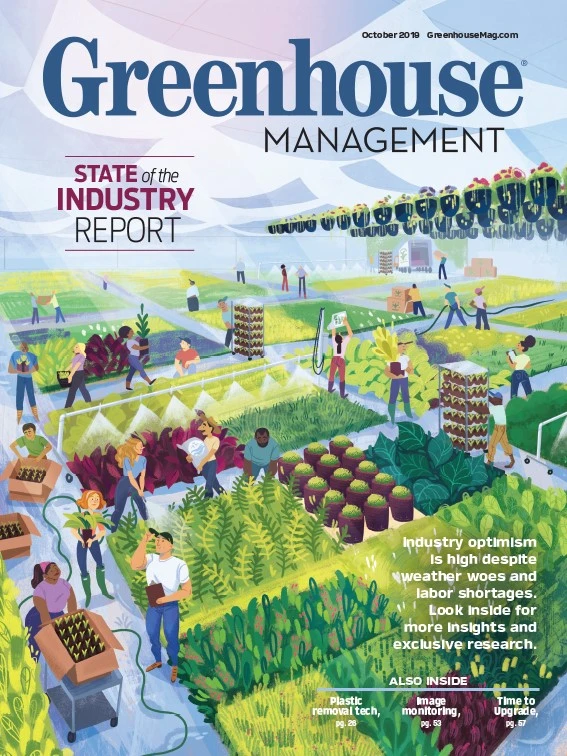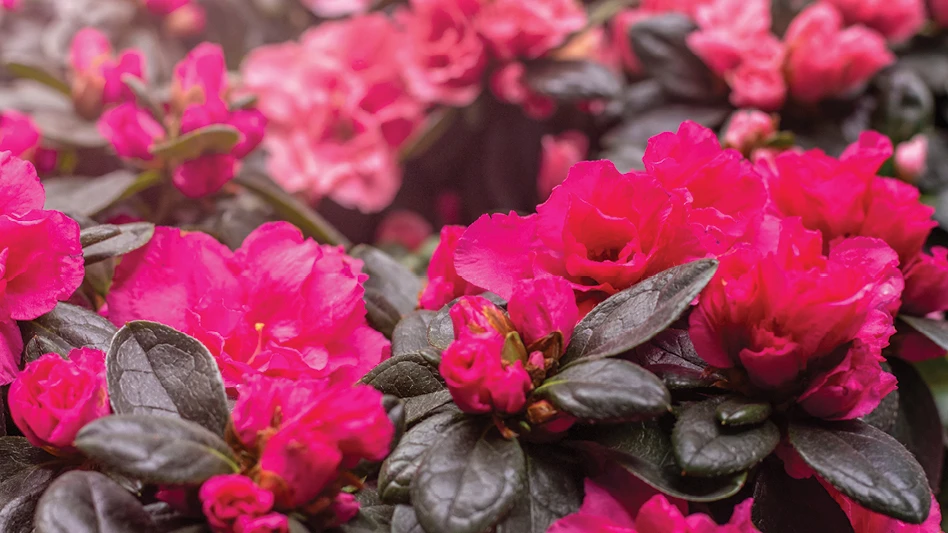

Winter is quickly approaching. It can be a challenging time for greenhouse production and while there is a myriad of challenges, one of the biggest is the cold temperatures outside. While we can heat a greenhouse to create air temperatures conducive to plant growth, therein lies one of the largest costs associated with running a greenhouse in the winter: energy. There are a few steps you can take to try and save on your heating costs this winter.
First, check all of your equipment to ensure it's functioning properly. For example, a vent not functioning correctly and potentially sticking will be no good in the winter. Boiler and unit heater maintenance performed during summer months can pay off by ensuring maximum efficiency during the heating season. But it’s not just equipment that needs checking. Your structure also needs attention. Look for potential gaps and cracks in glazing material that may be allowing heat to escape and/or cold air to infiltrate your facility. For double-poly greenhouses (Fig. 1), this is especially true. Poly film with any cuts or a malfunctioning blower fan will not have the dead air space between layers that helps gives these structures some of the lowest heat loss.
Do you use supplemental carbon dioxide (CO2) in your facility? During the winter, venting in facilities is greatly reduced. As a result, outside air coming into the greenhouse that serves to replenish the CO2 in the greenhouse used by plants is restricted, and CO2 concentration can start to limit plant growth. Additionally, if you’ve done a great job at sealing up the leaks in your greenhouse, as recommended above, the CO2 entering your greenhouse will be even less (though that is no reason to not seal up your facility!).
Supplemental CO2, whether from burners or liquid injection, can be used to maintain CO2 concentrations around ambient levels (~450 ppm) or enrich them up to 800 to 1,000 ppm to boost plant growth. Some research has even shown that when supplemental CO2 is used, air temperatures can even be reduced by a few degrees with no negative effect on plant growth.
Another strategy you may consider is to grow warmer. At first, this doesn’t sound like a great suggestion, but the logic is counterintuitive. By turning down temperature set points and growing cooler, you would certainly save on heating costs compared to growing with a warmer temperature for that day.
However, the total time it takes to finish a crop can end up taking longer by growing cooler, which can cost you more in the long run. By finishing a crop faster at a warmer temperature, you can delay starting that crop along with the need to heat the greenhouse. Alternatively, the quicker crop time may allow you to increase the number of turns and increase profitability from the extra plants grown and sold.
There is no crystal ball that can predict the future. However, the USDA's Virtual Grower is a great tool to help you make educated decisions. Virtual Grower allows you to model your greenhouse, use customizable inputs to reflect your facility and estimate the costs for heating.
You can also use the program to determine how changes in your facility or environment can affect your heating costs and realize savings. But it is not just heating. The newest version also helps understand how supplemental light can impact crop growth and save energy. And that’s a key part of preparing for the “Big Chill.”
Get curated news on YOUR industry.
Enter your email to receive our newsletters.

Explore the October 2019 Issue
Check out more from this issue and find your next story to read.
Latest from Greenhouse Management
- Growing enlightened
- American Floral Endowment awards 17 organizations $60,700 in educational grants
- Floral businesses invited to join Society of American Florists' Petal It Forward event in October
- Bioline AgroSciences acquires Viridaxis to strengthen leadership in aphids biocontrol
- Ryley Leech joins JumpLights as vice president of sales
- Meet the Retailers' Choice Awards from 2025 Farwest Show
- Added value
- National Garden Bureau announces featured crops for 2026 'Year of the' program






